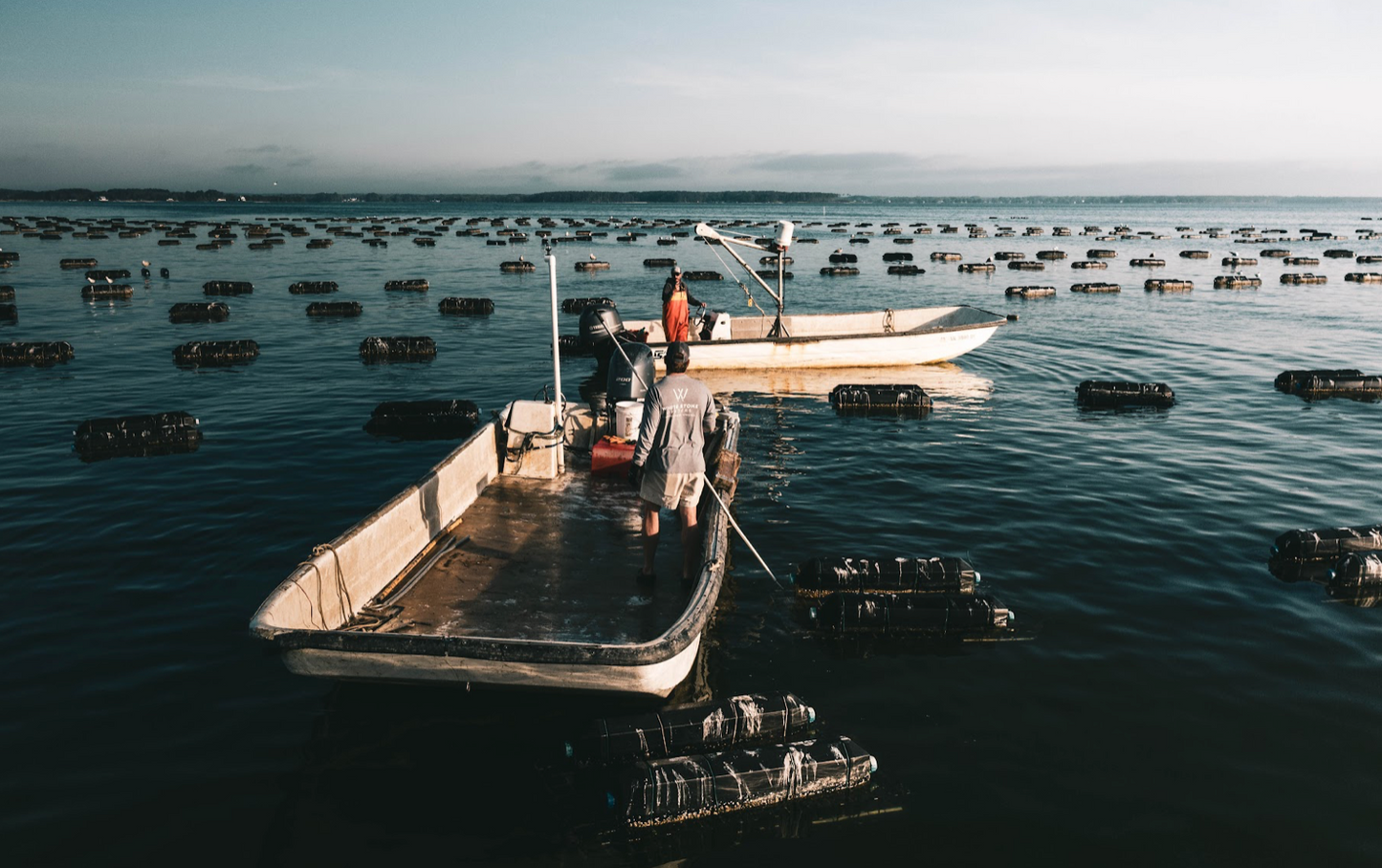
The Chesapeake Bay is an amazing place and since our creation, we’ve made it our goal to work to help to build the bay and help support the ecosystem and region that gives us so much. Oyster farms like ours benefit the Chesapeake Bay in a number of ways. First, we’re able to create jobs and bring revenue to the region. Farmed oysters are also responsible for filtering micronutrients out of the bay, preventing hazardous algae blooms, and cleaning the area’s waters. Lastly, recycled oyster shells can be used to create artificial reefs which provide habitat for many other species.
As part of the largest aquaculture industry on the east coast, we take our role in protecting the Chesapeake Bay seriously. Not only does a clean bay produce better oysters, but it’s important to us that we continue restoring this area into the thriving ecosystem it once was. At the time of a 2019 study, the wild oyster population was less than 1% of what it was historically. This creates a toxic buildup of algae and nutrients that choke the waterway.
By introducing farmed oysters like ours, we can begin to filter the bay. On average, 100,000 oysters can remove 6 pounds of excess nutrients and algae yearly. The effects are staggering. Cleaner water allows wild oyster populations to regrow, as well as allows critical coral to regenerate creating a habitat for fish and other wildlife. In a sense, oysters start a chain reaction of regeneration that extends throughout the bay.
Under natural conditions, oysters form reef structures that support more than 300 other species. Oysters are a keystone species in the Chesapeake Bay, filtering 30-50 gallons of water daily.
As of 2020, aquaculture in Virginia and Maryland is a $30 million industry. U.S. seafood consumption ranks 4th in the world, and to satisfy the demand our country currently imports nearly $19 billion in seafood annually, resulting in a $12 billion trade deficit. What this means is that as we continue to build a healthier bay and a busier seafood industry, we’re able to reduce the trade deficit, create jobs in waterfront areas and provide consumers with higher quality, local products.
Shellfish aquaculture is essential to helping the recovery of some of the Chesapeake Bay’s ecosystem as well as the economy in the area. This ripple effect can spread to other waterways and industries in the region.
← Older post Newer post →
